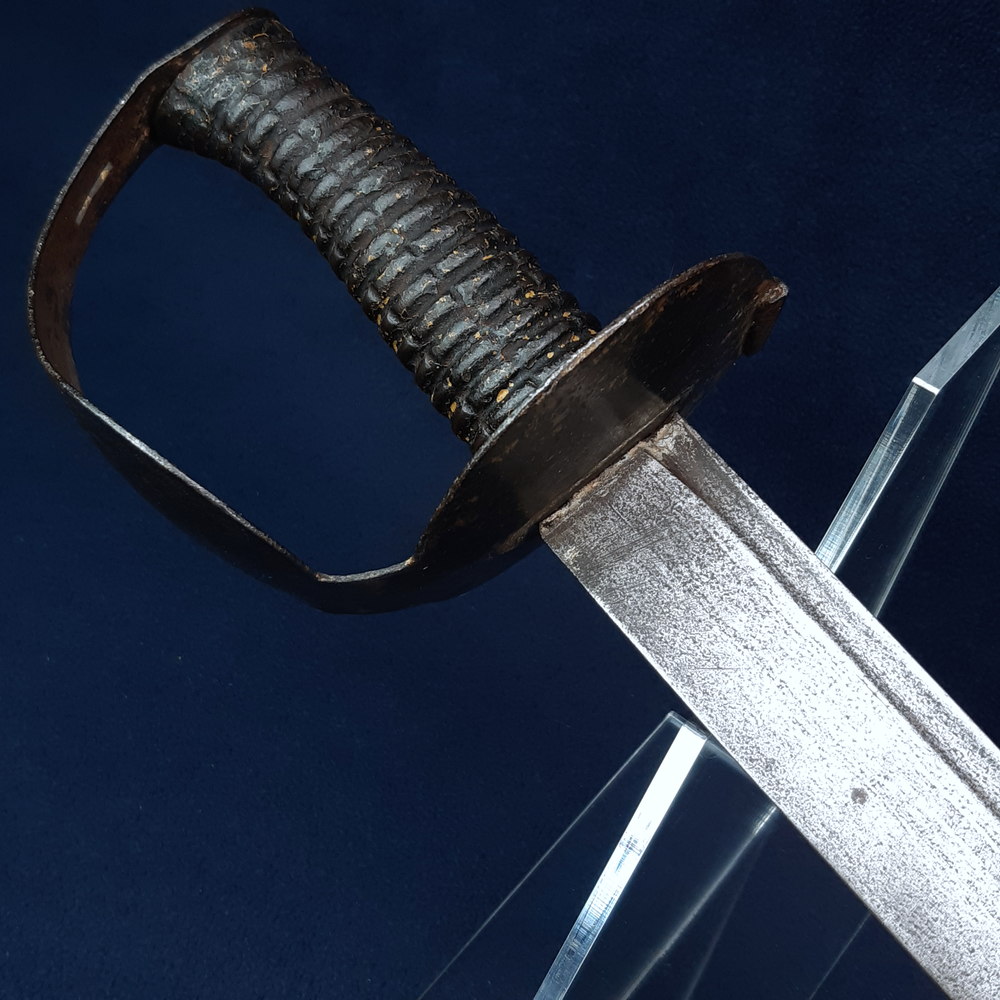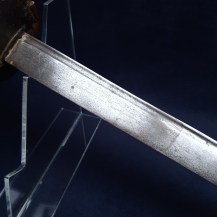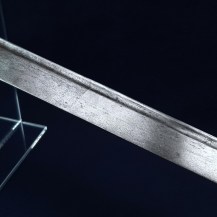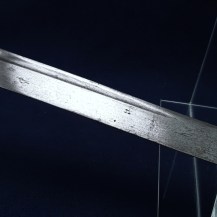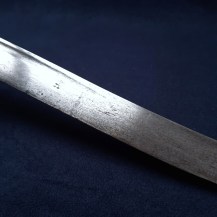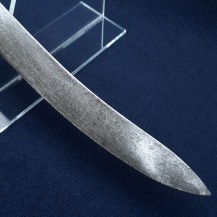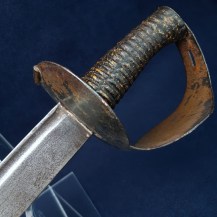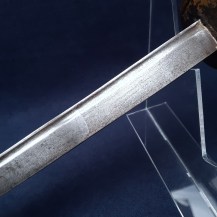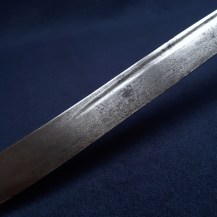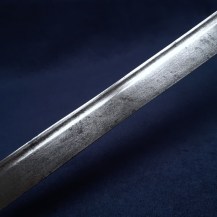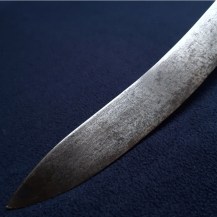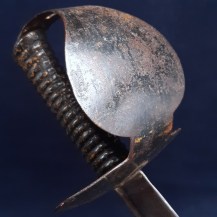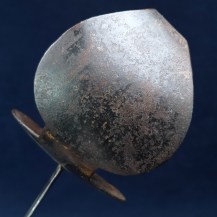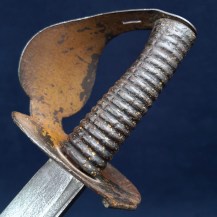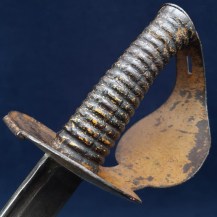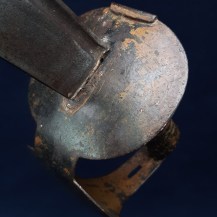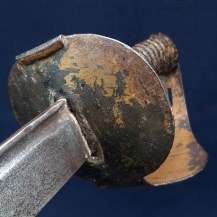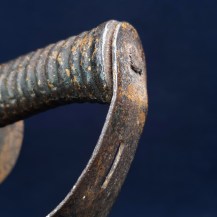British Circa 1804 Naval Cutlass with Unusual Variant Blade
Single fullered spear pointed blade with upturned tip section, iron ‘figure eight’ hilt with sword knot slit, tubular quillon. Solid iron grip cast with corrugated texturing. Barest fragments of a leather washer. Blade 28 3/8 inches in length, the cutlass 33¼ inches overall. No scabbard.
This cutlass has the ‘figure-eight’ hilt and grip that were used on the first standardised cutlass for the Royal Navy, the 1804 Pattern, but pairs these with an unusually shaped blade, neither fully straight due to its upturned tip nor with a continuous curve. Its single narrow fuller running close to the spine is of the style seen on British hangers and backswords of the 18th century, whereas the 1804 Pattern was unfullered, simpler to manufacture but heavier in use.
This blade shape seems to be rare but has been seen on other cutlasses of the late 18th century. See Lot 212 sold at Antony Cribb auctions on 26th Nov, 2024: described by them as a late 18th century American cutlass, that example has the same unusual blade shape but with a simpler iron strap hilt and ribbed wood grip.
The Cribb example might indeed be American in origin, but this example is more likely British in origin because of its use of the Pattern hilt and grip. That said, British and American cutlasses of that period shared design features and components could be traded or reused. Without a maker’s mark this identification can’t be conclusive. With no evident military marks either I would suggest this cutlass was made for the commercial market: suppliers of the period sold even-handedly to the Royal Navy, merchant shipping and the growing American market.
Compared with the Cribb example and most other pre-Pattern cutlasses I would say this was the better sword: the textured and contoured cast iron grip was less likely to turn in the hand and coped better with sea air than smooth wood, the figure-eight hilt offered more hand protection than a simple knucklebow, and providing a knot slit allowed it to be tied to the hand more securely.
Logically this cutlass must postdate 1804, and was perhaps a transitional piece or a manufacturer making use of the availability of Pattern components to pair with traditional blades –30,000 of the 1804 Pattern were ordered split between ten different manufacturers in the period from 1804 to 1808, so plenty of parts would have been available from the production boom.
Like other swords of this period the hanger has a low carbon tang and shoulder, forge welded to a higher carbon steel blade, and the differential aging of the two materials can be seen clearly at the transition point. The two pieces were stepped to increase the surface area of the weld: one can see the line of the weld on the spine and the iron surface extends further up the blade on the right face than the left (roughly 7 inches vs 6 inches).
The blade is unsharpened with a few small dents to its edge and a slightly rolled tip (~1mm). Its surface has areas of patination, light scratching, spots of light pitting in the fuller and around the tip. The hilt and grip have the common black japanned finish, but have also been painted with an unusual tan colour. It is difficult to tell which was applied first but more of the tan remains, particularly on the inside of the hilt. Both have rubbing and flaking exposing heavily patinated iron. Slight rotational movement to the grip.

